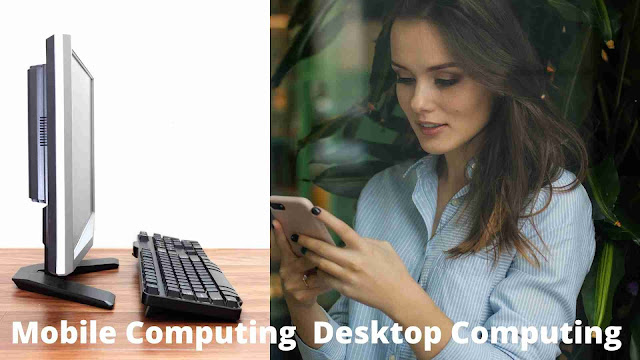Mobile Computing Convergence: Merging with Desktop Computing
 |
Mobile Computing Convergence |
Mobile Computing It seems like yesterday when the mobile operating systems that dominate the world scene crept into our lives: Android and iOS. We have become so used to them that we no longer conceive of life without them, at least a large part of our daily activities. These systems have managed to coexist with desktop systems, mainly Windows and Mac, but as time passes, the line that separates mobile computing from desktop computing becomes more blurred.
The rumor has already resonated through the blogosphere and specialized
technology news portals that Apple wants to merge its two platforms, iOS, and
Mac, to offer a global, uniform, and linear solution that does not interrupt
our routine and that does not divide our work in that that we can do with a
mobile phone and that there is no other choice but to sit in front of a
conventional computer.
It seems that the last Apple keynote was very forceful in this matter making it clear that they had no pretense of merging anything. Of course, a door was left open that apps developed for iOS could work on Mac ... so it is not as clear as Apple claims, because they are carried away by the trend of merging some elements of the two platforms.
Today, for the work we do in the office we are clear that the great protagonist for us is desktop computing, we could not do 90% of our work without a desktop computer. And I think that is the case of the vast majority. The mobile or the tablet is for what they are,
to keep us tied to the messages when we leave the office as if an email could not wait a few hours, or a WhatsApp could not wait to be answered. Speaking of WhatsApp, we hate using it on mobile. When you get used to the comfort of having it on your desk permanently, it is very lazy to write with the touch screen.
This being the scenario, I have been surprised for a long time that no
technology giant has managed to start a trend to merge all platforms, desktop,
and mobile, achieving that with a single device we are able to work and move
indistinctly. My vision of this matter has always been the same: I have
imagined a powerful smartphone, very powerful, with enough capacity to reach
the office and pose on the base of a monitor that will instantly connect
wirelessly to the mobile to show a desktop adapted to the size of the screen,
but with all our mobile apps. In other words, turning our smartphone into the
«tower» of a lifetime, into the CPU of our home computer. That would be a dream
for me, but I see it closer and closer.
It is true that lately, I have seen some news in the sector that points in this line, but the idea is still in its infancy, and those who try to do it do so from the point of view of hardware, not of software as a single platform. Gone are Microsoft's promises, back in 2015, that Windows 10 would be the key to achieving convergence.
With that vision, I only see Apple capable of executing such an arduous task. It is not because I am an unconditional user of Apple (I spend the day repairing Windows computers and I know what I am talking about), but that Apple is the only one that controls the 3 areas necessary to achieve this end: it manufactures the hardware, the mobile software, and the desktop. And he does it very well. So if you put your mind to it, you just have to wait until the physical limitations of mobile processors allow you to reduce the gap in power required to enjoy a useful experience when running heavy desktop applications on a mobile device. Time to time!














Nice post
ReplyDeleteNice post
ReplyDelete